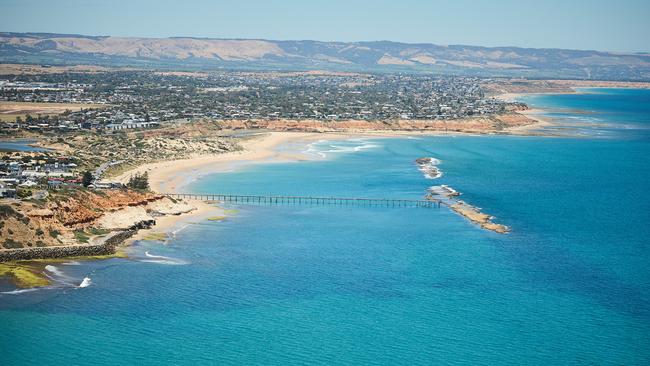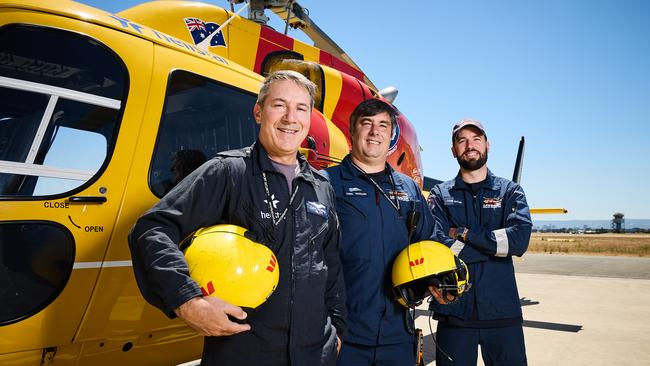Massive decrease in shark sightings as weather continues to fluctuate
Shark sightings have decreased however, some spots remain more common than others. See where the most sharks have been spotted.

SA News
Don't miss out on the headlines from SA News. Followed categories will be added to My News.
It’s been a rather sharky start to the holiday season, with the toothy creatures closing metro beaches on two occasions this week and big great whites being spotted near popular holiday spots.
A huge shark was sighted at Black Point on the Yorke Peninsula, another was filmed by boaties off Brighton earlier this week and Port Lincoln locals have been observing the incredible phenomenon of great whites feeding on the carcass of a dead whale at September Beach.
However despite these high profile cases, experts say shark sightings are actually down around 40 per cent on last year.
The fall in shark spottings has been attributed to this year’s unstable weather and high rainfall, with Surf Life Saving South Australia (SLSSA) reporting only 69 sighting between October 1 and December 24 this year, compared to 108 at the same time last year.
Senior crew member of the SLSSA’s Westpac life saver rescue helicopter Chris Parsons said he has noticed the most sightings in Moana, Seacliff and Henley Beach.

Mr Parsons said sharks sightings tended to decrease on extremely hot days.
“We tend to see more sharks in October, November and December but the numbers start to drop off,” he said.
Mr Parsons noted the number of shark sightings do not indicate the number of sharks, but rather the amount of times sharks were seen.
“We saw a shark today at Henley and we moved it out and an hour later we saw a shark in the same area,” he said.
“It could’ve been the same shark.”
The public, SES and SLSSA all report shark sightings. ☺
The rescue helicopter, which operates between October and April each year, has completed 74 flights across 200 hours of flight time and was responsible for 62 shark sightings and 1635 preventive actions last season.

SLSSA life saving and emergency operators manager Daniel Willets said vigilance was key to keeping safe at the beach.
“If a swimmer hears a siren sounded continuously, this is the emergency evacuation alarm and people should leave the water immediately.
“We will evacuate but not close beaches. This siren comes from the iconic red & yellow Westpac life saver rescue helicopter, the shark spotter plane or Surf Life Saving beach patrols at clubs between North Haven and Goolwa,” he said.
“We also remind South Australians to be aware of your surroundings and, where possible, swim between the red and yellow flags. This is the area that our dedicated volunteer surf lifesavers are watching most.”
The advice from life savers and authorities is, be alert, but not alarmed.
Authorities say to enjoy the beach, and to ensure your safety, visit a patrolled beach and swim between the red and yellow flags.

There are various ways people can report shark sighting, depending on the risk to human life and the location of the sighting itself.
Shark sightings within 500 metres of shore can be reported to SAPOL on 131 444.
Sharks that are more than 500 metres offshore or greater that three metres in length can be reported through the 24-hour FISHWATCH hotline on 1800 065 522 and the SA Fishing app.
In October 2022, Nat Drummond was attacked by a shark while water skiing at Seacliff.





